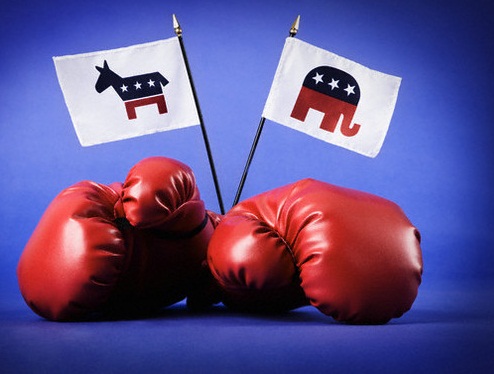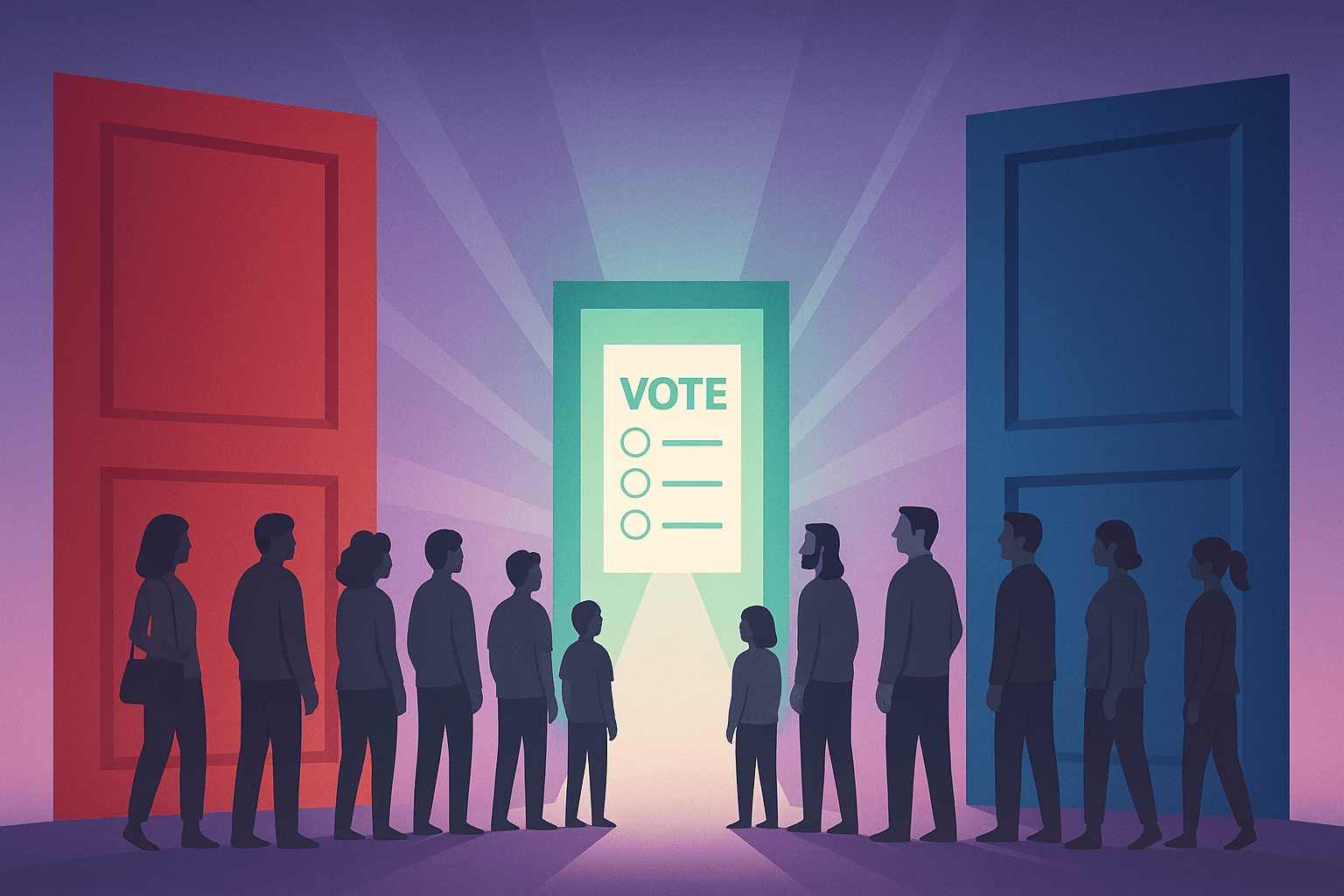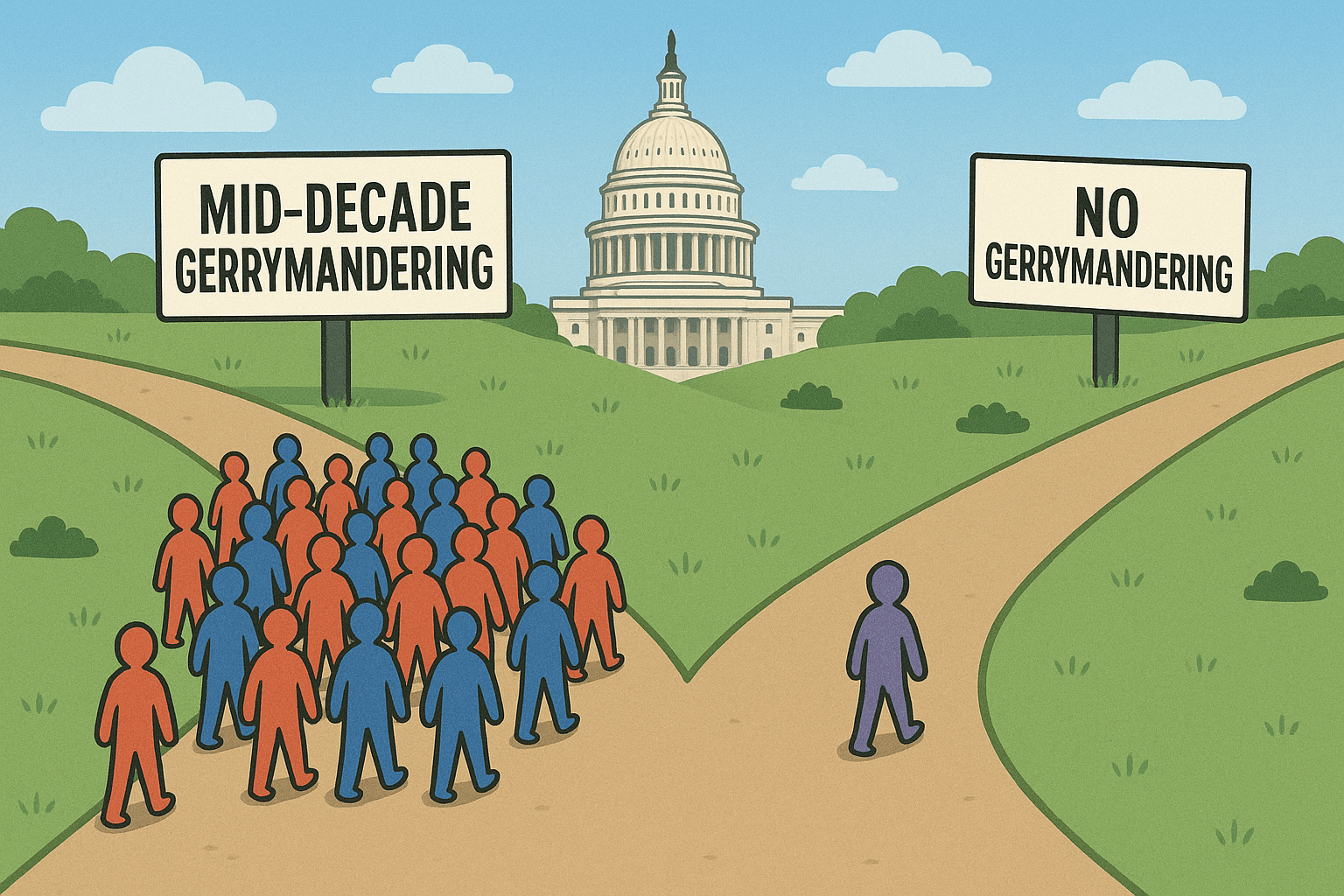Top-Two Open Primaries Show Plenty of Blue and Red

California’s top-two open primary election is a groundbreaking effort, but statistics show that it has a long way to go before it makes a substantive difference in terms of opening up the elections to Independent and third party candidates. This is the first year that the “No Party Preference” category has been added to the Green, Libertarian and Peace and Freedom alternatives to the traditional two-party system.
Of the state’s 53 Congressional voting districts, most are predominated by Democrats and Republicans, and only a handful have more than a single alternative candidate running either under Independent or third-party banners. There also remain a number of districts with a strict two-candidate, two-party choice, as well as a small number of single party elections.
Some of the districts offer a wide array of candidates, but most are from the two major parties. A perfect example is CD-8, which covers a vast swath of territory from Mono to San Bernardino County. This district has the largest number of candidates running anywhere in the state. Voters will be able to choose from among 10 Republicans, 2 Democrats and a single Independent, Anthony Adams. Independents coming out for the first time to cast meaningful primary ballots will surely determine the outcome of a race this crowded.
In CD-2, which covers an area of central Northern California from just above Sacramento to the Oregon border, voters will be able to choose among 12 candidates – 8 Democrats, 2 Republicans and 2 Independents.
There are only five districts throughout the state with more than a single Independent candidate running, and a total of seven districts with two or more Independent and/or third-party candidates running. It might not seem like many, but for the very first year of open primaries--it will give future voters much to think about.
There are a total of 27 districts with four or more candidates. That’s more than half of the state’s voting areas. In these districts, partisan votes will likely get split, if not multiple ways. This opens the door for a nonpartisan, or non-endorsed partisan to make their way to a November ballot.
It is unclear whether incumbency has much of an impact on the number of candidates running in a district. Although for the most part the largest number of candidates are running in districts without incumbents (1, 2, 8 and 47), there are a number of notable exceptions. District 52 (in San Diego County), for example, lists 9 candidates up against the incumbent Republican. Two of those candidates are Independents, including Jack Doyle, who we have covered here at IVN.
Traditional two-party, two-candidate races are in the clear minority, with only four remaining (Districts 4, 22, 36 and 53). Three districts have two-candidate, one-party races (40, 43 and 44 – all Democratic), and a single district (37) has an uncontested election with a Democratic incumbent.
Two districts (CD-20 and CD-33) offer 3 Independent or third party candidates, and CD-20 (mainly Kings County) is the only district with more third party candidates (3) than either Republicans or Democrats (2 each).
At this point are we at the beginning of a voter revolution with the top-two primary approach, or have we maxed out on the number of non-two-party candidates who will run in future elections? For now, the red-blue dichotomy remains largely in place. What makes a difference in this election, is that voters clearly have a lot of choices in certain districts. And their votes will have significant impact, a huge consideration for independents and moderate partisans worried about "throwaway" votes. It will be interesting to see whether these choices will result in changes in representation after the November elections. Given the fact that independent voters will be finally enfranchised by the system, some surprises may be on the horizon. At the very least, this year's election will pave the way for the future.




